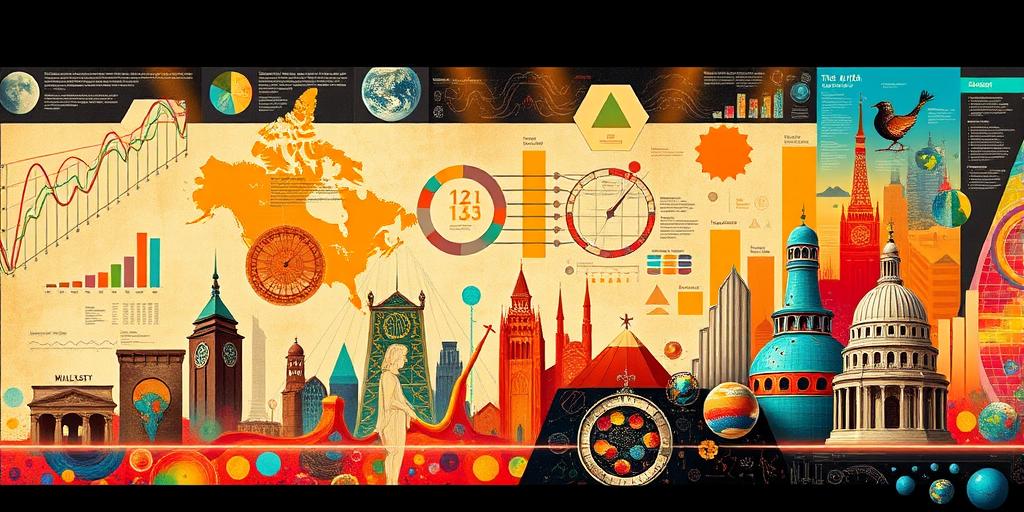When Data Science Was Just Called “Analysis”
Step back in time with us, to a time before the term “data science” even existed! Prepare to be amazed as we unveil the fascinating history of how data analysis evolved into the powerful field we know and love today. From early pioneers using basic tools to the rise of sophisticated algorithms, we’ll explore the dramatic transformations that have revolutionized this field. We’ll uncover how those who used to call themselves analysts, are now known as data scientists. This is a journey through time, showcasing the incredible evolution of data analysis.
The Dawn of Data Analysis: From Numbers to Insights
Before computers, before algorithms, before the very term “data science” existed, there were people diligently analyzing data. Think of it – meticulous work, involving hours spent poring over spreadsheets (or even worse, mountains of paper!), calculating statistics by hand. These were the early pioneers of data analysis, using basic tools and sheer determination to extract insights from the raw data at their disposal. Their work was largely limited by available technology, but their legacy laid the foundation for future advancements. They often relied on manual calculations and simple visualization techniques like charts and graphs created by hand or with rudimentary tools.
Early Examples of Data Analysis
Consider the work of John Graunt in the 17th century. He meticulously analyzed mortality records in London, creating early life tables and identifying patterns in disease prevalence. This was data analysis in its most rudimentary form, yet it was groundbreaking work that foreshadowed much of the work done today. These early analyses, while slow and laborious by modern standards, provided invaluable insights into population trends and public health. This was the dawn of the field. Many historians see this as the beginning of the application of data analysis. This early analysis led to significant changes in public health and governance decisions.
The Rise of Computing: Accelerating Data Analysis
The invention of the computer revolutionized data analysis. Suddenly, tasks that once took days or weeks could be completed in minutes or hours. This was no longer a slow and painstaking process! The introduction of programming languages, statistical software packages, and databases allowed for the analysis of datasets that were exponentially larger and more complex. The analytical techniques became more complex, and the results more detailed. The impact was transformative.
The Evolution of Statistical Software
Early statistical software packages were often quite basic, offering only limited functionality. Yet, as technology advanced, these packages became increasingly sophisticated and powerful. Programs like SPSS (Statistical Package for the Social Sciences) and SAS (Statistical Analysis System) emerged, enabling users to perform complex statistical analyses with relative ease. The user interface (UI) of these programs has also seen an evolution that continues to improve the usability of these tools for analysts and data scientists.
The Big Data Revolution and the Birth of Data Science
The current era is dominated by an unprecedented volume of data, and with this explosion came the need for more advanced techniques and a greater range of skills than ever before. The term “data science” itself emerged from the need to better encapsulate the complex mix of programming, statistical analysis, and business acumen now required. The analytical aspect of the discipline remains at the core. However, data scientists also need to be skilled programmers.
Data Science as a Multidisciplinary Field
The field of data science is truly multidisciplinary. It involves not just statistical analysis, but also programming, machine learning, database management, and domain expertise in various fields like business, healthcare, or finance. With the rise of data science, we have seen the evolution of the skills necessary to work with these kinds of data. The most effective and in-demand professionals now tend to have a combination of expertise in the various components of data science and related disciplines.
The Future of Data Analysis and Data Science
The field of data analysis and data science is constantly evolving, and it’s impossible to predict the future with certainty. New techniques and technologies are regularly emerging, and the role of data scientists continues to expand. Artificial intelligence (AI) and machine learning (ML) continue to hold a central place in the conversation around modern data science, with implications for the analysis of datasets of all sizes and types. The future is bright and full of potential for those who are passionate and committed to this dynamic field. The future of the field is expected to continue to evolve rapidly, driven by advances in technology and an increased demand for data-driven insights across diverse sectors.
We’ve come a long way from those early days of hand-calculations and rudimentary charts. Data analysis and data science have transformed from a niche field to one of the most important and impactful fields today. Embrace the evolution, and continue to grow your expertise. Let’s keep making data work for us!
Call to Action: Are you ready to become a data science powerhouse? Join our free online course and unlock your data analysis potential today!













